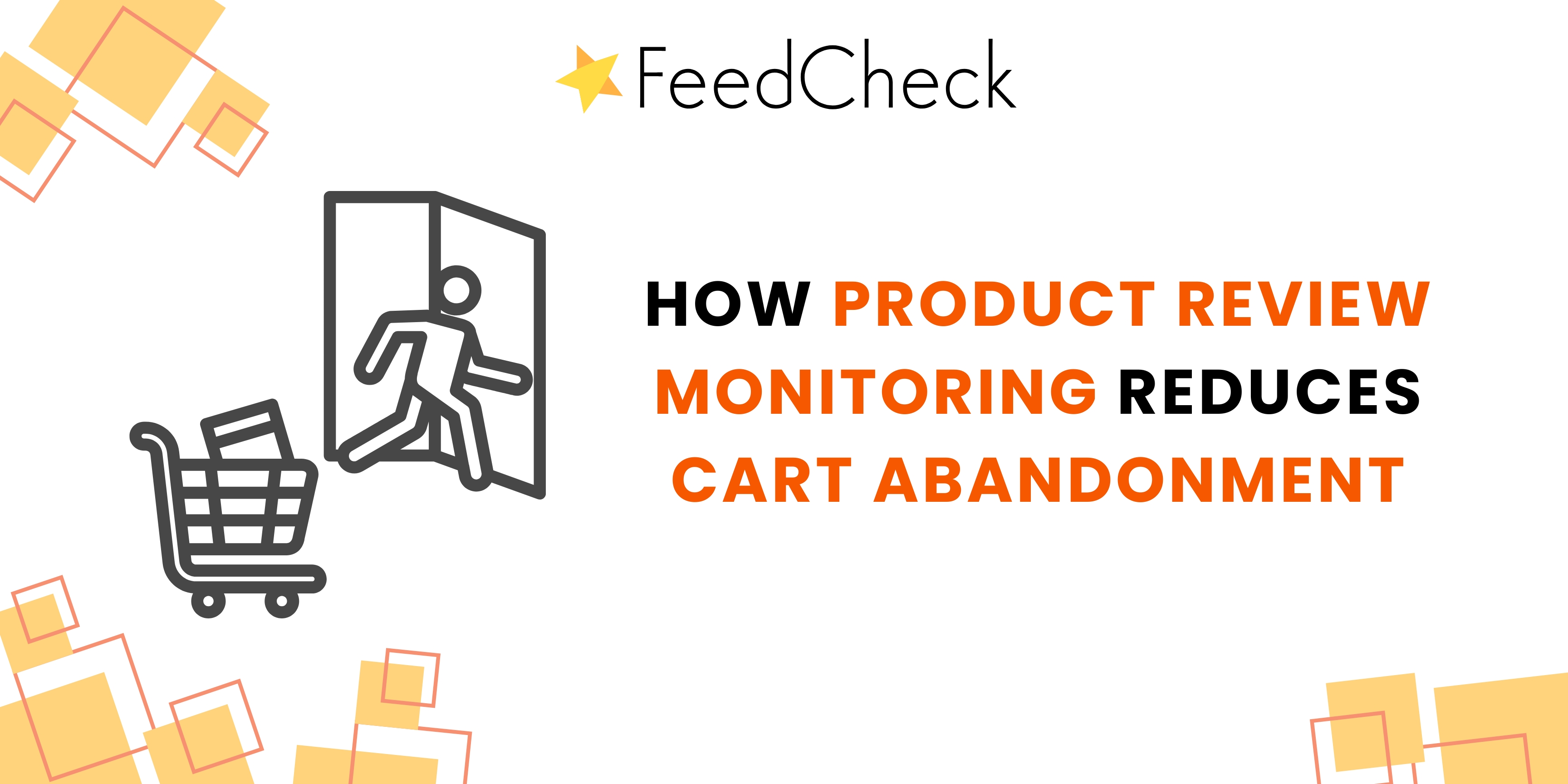Online shopping has transformed the way people browse, compare, and purchase products. With just a few clicks, customers can move from interest to checkout. Yet, as seamless as this process seems, cart abandonment remains one of the biggest challenges in e-commerce. Shoppers add items to their baskets, move toward purchase, and then suddenly exist without completing the transaction.
The issue is not just about lost revenue – it signals deeper doubts, hesitations, or unmet expectations. Brands looking to address this challenge need to go beyond flashy product pages and discounts, and tap into something more powerful: trust.
One of the most direct ways to build that trust is through reviews and, more importantly, through product review monitoring. By aggregating reviews, tracking, analyzing, and learning from feedback, businesses can reduce cart abandonment, minimize returns, and create a shopping journey that gives customers the confidence to click “buy”.
Why customers abandon their carts
According to GeckoBoard, the average abandonment rate is over 68%, meaning the potential loss is upwards of $3 billion. When the impact is that huge, companies have a responsibility to look into it and prevent it.
To understand how reviews help reduce abandonment, it’s important to first look at why shoppers hesitate. Cart abandonment is not always a sign of disinterest. It is, more often than not, the result of uncertainty.
Many customers abandon purchases because they aren’t entirely sure if the product will meet their expectations. Sometimes the product description is too vague, the images look staged, or there isn’t enough social proof to confirm the quality. Others worry about sizing, durability, or whether the product looks the same in real life as it does on screen.
This uncertainty leads shoppers to hesitate, compare across different platforms, or simply abandon the idea altogether. Even strong marketing campaigns can fail at this stage if they don’t address the critical gap between what a brand promises and what the customer expects.
Reviews as a digital form of “try before you buy”
Unlike physical retail, where customers can test, touch, or try on products, online shopping often relies on representations. This is where reviews can be used as a kind of digital substitute.
A review goes beyond the product descriptions to offer a real-world account of what a buyer experiences. Photos submitted by customers, honest comments about fit, usability, and durability all work together to set realistic expectations. Shoppers browsing aggregated feedback from past buyers gain the reassurance that the product has already been tested and approved.
When buyers see patterns within aggregated reviews, such as repeated mentions of sizing accuracy or material durability, they develop confidence in their purchase decisions. Conversely, if a lack of reviews or inconsistent experiences is visible, hesitation sets in, and cart abandonment becomes more likely.
Reviews function as the social validation customers need. They answer the unspoken questions: is this product reliable? Will it meet the needs of the customer? Can this brand be trusted?
The more authentic and visible these answers are, the more likely shoppers are to complete the transaction and make the purchase.

How reviews reduce cart abandonment and returns
Many assume the main reason for returns is due to defective products. However, cart abandonment and product returns are connected. In both cases, the underlying issue is unmet expectations. Customers either stop before purchasing because they are uncertain, or they buy and then return the product when reality does not match what was promised.
When only 3 out of 10 customers actually make it to checkout to complete the purchase, it’s important to know what can fix cart abandonment: reviews. By setting accurate expectations upfront, they prevent disappointment later. A potential customer reading aggregated feedback about how a piece of furniture fits in small spaces is less likely to abandon the cart due to uncertainty about dimensions. That same review also reduces the chance of a return by confirming the product’s suitability before purchase.
In this way, reviews act as both reassurance and a long-term safeguard for brands. They drive conversions by eliminating hesitation, and they reduce return costs by aligning customer expectations with the real product experience.
The role of product review monitoring
While customer reviews themselves are powerful, their true value emerges when brands actively monitor and analyze them. This is where product review monitoring comes into play.
At its core, product review monitoring is the practice of systematically aggregating reviews, tracking, and analyzing feedback across multiple platforms. Instead of viewing feedback as an afterthought, it becomes a strategic tool for understanding customer behavior and addressing purchase barriers.
With the help of a review monitoring tool, businesses can aggregate reviews from multiple marketplaces and platforms. This provides a consolidated view of how customers perceive their products and highlights recurring themes. By using an online reputation analysis process, companies can identify whether doubts about quality, sizing, or delivery are leading to cart abandonment.
For example, if customers repeatedly mention unclear product descriptions in their feedback, this signals that the brand should improve its content to reduce hesitation. Similarly, by checking reviews, businesses can ensure they are not missing critical insights that influence conversion rates.
Beyond just feedback: review monitoring for optimization
Product review monitoring is not limited to problem-solving. It can also be a powerful driver of customer experience optimization.
When brands track reviews consistently, they gain insights into evolving customer needs. Aggregated feedback highlights what customers value most, whether it is fast delivery, sustainable packaging, or ease of use. This knowledge helps businesses adapt their product offerings and marketing messages to align with customer priorities.
At the same time, customer review monitoring supports ongoing trust-building. By visibly responding to reviews and addressing concerns, businesses demonstrate transparency. This level of engagement strengthens brand loyalty, reduces skepticism during the purchase process, and lowers the risk of cart abandonment.
And when companies regularly check online reviews, they identify problems before they escalate into negative patterns. They can also detect misleading or fake reviews that might undermine customer trust. Review monitoring provides the opportunity to adapt product descriptions, customer service, and return policies before these issues lead to higher cart abandonment.
Reviews act as a digital reputation currency, and effective customer review management ensures that customer voices are heard, responses are timely, and credibility is protected. Without strong platforms for online reputation analysis, businesses risk falling behind competitors who understand and address customer concerns.

Product review monitoring with FeedCheck
This is where dedicated solutions like FeedCheck come in. FeedCheck makes product review monitoring straightforward by collecting and analyzing reviews from multiple platforms in one dashboard. Instead of manually searching through marketplaces and relying on scattered feedback, brands can use a centralized system to streamline their customer review management.
The platform not only simplifies monitoring but also provides the analytics needed for online reputation analysis. Businesses can understand what drives customer trust, what hesitations lead to cart abandonment, and where improvements can directly impact conversions.
By turning aggregated reviews into actionable insights, FeedCheck helps brands reduce uncertainty in the buying process. The result is fewer abandoned carts, more completed purchases, and stronger long-term customer relationships.
Conclusion
Cart abandonment remains a critical challenge for e-commerce, but it is not unsolvable. At the heart of the issue lies trust, or rather, the lack of it. Reviews provide that trust by giving customers realistic expectations and reassurance. When brands go one step further by actively practicing product review monitoring, they then have the ability to identify doubts, reduce abandonment, and minimize costly returns.
Through consistent monitoring, analysis, and customer engagement, businesses transform reviews from scattered opinions into strategic assets. By leveraging tools like FeedCheck to aggregate feedback and conduct online reputation analysis, companies can bridge the gap between customer expectations and product delivery.
Ultimately, the brands that succeed will not be the ones with the loudest marketing campaigns but those with the clearest, most authentic feedback-driven insights guiding their customer experience. Product review monitoring is not just about tracking feedback—it is about reducing friction, building trust, and ensuring that when customers add items to their carts, they follow through with confidence.
